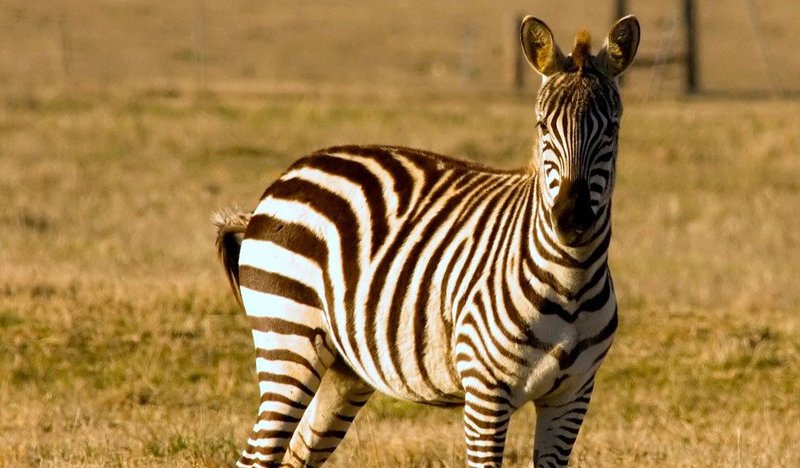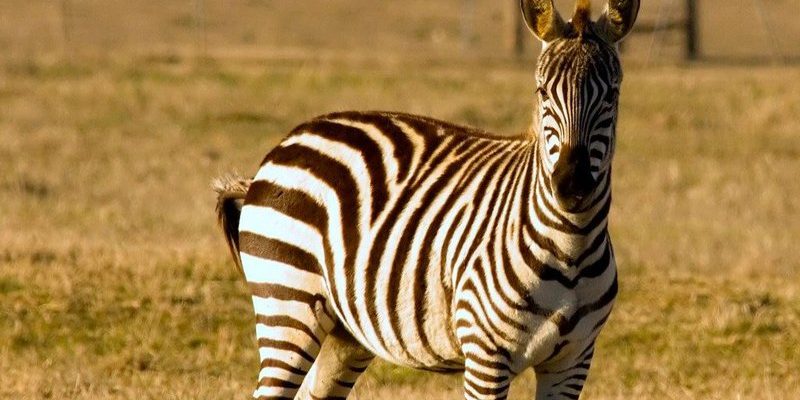
Imagine hiking up a steep hill and coming across a zebra that seems to dance across rocky cliffs. That’s the mountain zebra for you! They are more than just a pretty face; they have adaptations that help them thrive in challenging environments. So, grab your favorite drink, and let’s sit down together as we explore some truly fascinating facts about these remarkable animals.
1. Distinctive Stripes
You might think all zebras look alike, but mountain zebras have some unique features that set them apart. Their stripes are narrower and more defined than those of their plains cousins. This gives them a more intricate pattern, almost like a unique fingerprint. Interestingly, these stripes don’t just look good; they also serve a purpose.
The stripes help regulate their body temperature by reflecting sunlight and keeping them cool. Plus, the bold patterns can confuse predators, making it harder for them to single out one zebra in a herd. Can you imagine how different life must be for them, darting between shadows and light, especially in their rocky habitat?
2. Adaptations for Survival
Mountain zebras have developed some incredible adaptations to navigate their rugged environments. With their strong legs and hooves, they are agile climbers, allowing them to leap over obstacles and scale steep inclines. This agility gives them a distinct advantage when it comes to escaping predators like lions and hyenas.
Their strong social structure plays a crucial role in survival too. Mountain zebras live in small family groups, usually led by a dominant male. This social structure allows them to work together to protect against threats. Imagine a team of zebras working together, keeping an eye out for danger while also having fun!
3. Unique Social Behavior
Speaking of social structures, mountain zebras are known for their intriguing social behavior. Unlike some other zebra species, they form tight-knit family groups consisting of a dominant male, a few females, and their young. This close connection provides safety and support, especially during challenging times.
You might be wondering how these zebras communicate. They use a range of sounds, from barks to snorts, to convey different messages. A simple snort can alert the group of danger, while softer noises can strengthen social bonds within the family. It’s like their own little language—a mix of sounds and body language that keeps them close while facing the wild together.
4. Endangered Status
Unfortunately, mountain zebras are classified as near threatened on the IUCN Red List. Their numbers have dwindled due to habitat loss and hunting. As their natural range shrinks, it becomes increasingly difficult for these zebras to thrive. Conservation efforts are crucial to ensure the survival of these beautiful creatures.
Organizations are working tirelessly to protect their habitats and raise awareness about the importance of mountain zebras in their ecosystems. By preserving their environment, we’re not just saving a species; we’re maintaining the rich biodiversity that makes our planet so special. Every action counts, and you can be part of the solution by supporting conservation efforts in your area.
5. Diet and Foraging Habits
Mountain zebras are herbivores, munching on a variety of grasses, leaves, and shrubs found in their hilly habitats. They have strong teeth that help them browse tough vegetation, allowing them to thrive even in less-than-ideal conditions. It’s interesting how their diet varies based on the season and the availability of food.
What’s fascinating is that mountain zebras have a unique way of foraging. They often graze in open areas during the day but seek shelter in more secluded spots when it gets too hot or during the night. This behavior helps them avoid predators while still obtaining the nutrition they need. It’s a clever balancing act that speaks volumes about their adaptability.
6. Gestation and Growth
Another interesting fact about mountain zebras is their reproductive cycle. After a gestation period of about 12 months, female mountain zebras give birth to a single foal. This foal is typically able to stand and walk within just a few hours of birth, which is crucial for its survival in the wild.
Those first few weeks are vital for the foal. It stays close to its mother, learning the ropes of life in the wild. As it grows, the foal starts to nibble on grass but still relies heavily on its mother’s milk. It’s amazing how quickly they adapt!
7. The Importance of Habitat
The mountain zebra’s habitat is key to their survival. They thrive in mountainous and hilly regions, where they can find ample food and shelter. This habitat is not just a home for them; it’s a flourishing ecosystem that supports many other species.
Maintaining this delicate balance of nature is crucial. When conditions in their environment change—whether from climate change, deforestation, or human encroachment—mountain zebras face significant challenges. Protecting their habitat is essential, as it also safeguards the broader ecosystem that supports countless forms of life.
8. Conservation Efforts
Conservation initiatives for mountain zebras are underway in several parts of their range. Protected areas and reserves are being established to ensure these zebras have a safe space to live and breed. Local communities are vital partners in these efforts, helping to educate others on the importance of preserving wildlife.
One powerful initiative is ecotourism, which encourages visitors to appreciate these magnificent animals in their natural habitats. By supporting responsible tourism, you can contribute to conservation efforts—all while enjoying the beauty and wonder of the mountain zebra and its home.
9. Fun Facts and Trivia
Here’s where things get a bit quirky! Mountain zebras have been known to exhibit some unique behaviors that set them apart from other zebras. For instance, they often use their tails for communication, swishing them to signal to others in their group.
Also, did you know that mountain zebras can run up to 40 miles per hour? That’s a lot of speed for an animal that seems so laid back! Plus, their unique social behaviors, like grooming each other, strengthen bonds within their family groups. It’s these quirky traits that make them so endearing.
10. How You Can Help
Finally, if you’re inspired by the mountain zebra’s story, there are a few things you can do to help. Supporting wildlife conservation organizations, sharing information with friends and family, or even visiting protected areas where mountain zebras reside can have a positive impact.
If you’re passionate about wildlife, consider advocating for policies that protect their habitats or participating in local clean-up events. Every bit helps, and even small actions can contribute to a brighter future for the mountain zebra and countless other species.
As we wrap up our journey through the fascinating world of the mountain zebra, it’s clear that these animals are more than just striking black-and-white figures in the wild. They’re a symbol of resilience, adaptation, and the beauty of nature. By learning about and supporting them, we play a part in ensuring their survival for generations to come. So next time you see a zebra—whether in pictures or in the wild—remember the mountain zebra and all the incredible facts we’ve uncovered today.

